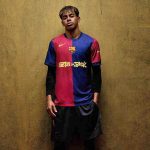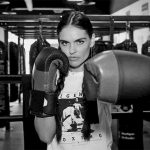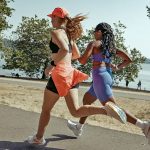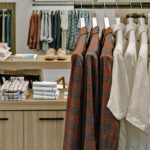Under Armour Inc. reported earnings rose 26.9 percent in its third quarter ended Sept. 30, to $72.8 million, or 68 cents a share, exceeding Wall Street's consensus estimate of 66 cents. Revenues jumped 25.7 percent to $723.1 million, led by strong double-digit growth across categories and representing its 14th consecutive quarter with net revenue growth of 20-plus percent.
The company again raised its outlook for the year. Shares of the high-flying stock, however, still slid $4.00 to $79.98, apparently because the company’s initial 2014 forecast came in below Wall Street expectations.
By category, apparel revenues increased 26.1 percent in the third quarter to $560.9 million, representing its 16th straight quarter of at least 20 percent growth. On a conference call with analysts, Brad Dickerson, CFO, said the gains were primarily driven by the continued expansions of the Storm and Charged Cotton platforms, as well as the introduction of ColdGear Infrared technology. Average selling prices were approximately 5 percent higher during the quarter.
From a product category standpoint, while training remains its largest category and drove majority of the dollar growth, UA experienced strong growth rates in its running, hunting and mountain categories across genders. UA officials also said it continues to see momentum in its Women's Studio line, as well as significant growth across its Youth business.
Footwear net revenues increased 28.3 percent to $81.0 million, led by strong gains in both running and football. Running benefited from the continued expansion of UA Spine and improved penetration across wholesale. Football was led by its Highlight line.
Accessories revenues increased 18.4 percent to $64.4 million, primarily driven by bags and headwear. Licensing revenues expanded 29.4 percent to $16.9 million.
International net revenues increased 37.8 percent to $44.3 million in the quarter and represented 6 percent of net revenues, headed by strong growth in Europe and Asia.
Direct-to-Consumer revenues grew 34 percent year-over-year, which represented 25 percent of total revenues for the quarter, up from 24 percent in the 2012 quarter. Six new Factory House stores opened during the quarter, increasing its North American Factory House store base to 112, up 17 percent from 96 locations at the end of last year's third quarter. It expects to add four more Factory House stores during the remainder of the year. Nine existing factory locations are on track to be expanded to offer broader assortments of areas such as Footwear and Women's.
Positive results are continuing to come from its full price Brand House in Baltimore, with a second set to open in November in Tysons Corner near Washington, D.C.
E-commerce continues to see strong results, driven in part by positive trends in average order value in its improved inventory positioning across the channel.
Gross margins for the quarter eroded slightly to 48.4 percent compared with 48.7 percent. Higher U.S. import duty exposure on certain products imported in prior periods negatively impacted gross margins by approximately 90 basis points. Product costs were also impacted by the resourcing of cleats and the use of “more reliable but higher cost suppliers” that pulled down gross margin to be approximately 30 basis points. Those items both of which were forewarned in the second quarter conference all – offset ongoing supply chain enhancements that contributed to a lower apparel sales discount, and allowances and air freight expenses, that benefited gross margins by approximately 70 basis points.
SG&A expenses as a percentage of revenues were 31.7 percent in the third quarter of 2013 compared with 32.9 percent in the prior year's period, primarily reflecting leverage of marketing expenses. Third quarter operating income increased 33.0 percent to $120.8 million.
On the call, Kevin Plank, CEO and president, discussed four areas: marketing, innovation, its success reaching youth and some management changes.
Around communications, Planks noted how ColdGear Infrared launched at retail in the quarter is “off to a great start” while Speedform will be the “big story” in footwear for 2014. This year, UA used three Brand Holidays to make a big splash around key launches with the third coming in November supporting around ColdGear Infrared supported by its athletes such as Olympian Lindsey Vonn, Freeskier Bobby Brown, and PGA Rookie of the Year Jordan Spieth.
In 2014, a greater focus will be placed on key products “in a more extensive effort with our retail partners designed to drive traffic in and our stores at key points throughout the year.” That greater integration will also be on display at its Brand House in Baltimore, its newest store opening in early November in Tysons Corner, and the planned opening of its first Manhattan store in SoHo in Spring 2014.
“Combined with our New York office that is opening early next year, this new retail space in SoHo will give us a meaningful presence in the city and enable us to bring a local Under Armour story to New Yorkers and the millions of tourists that make their way there as well,” Plank said.
Its new store in Shanghai that puts a greater focus on storytelling over merchandising product was also given as an example of UA’s emerging communications approach.
On innovation, Plank highlighted efforts to be “best-in-class” regardless of the distribution channel that helps supports its premium price positioning, pointing to its ability to sell ColdGear Infrared long sleeves at $50 or a woven stretch Capri at $55. Said Plank, “We believe our ability to continually innovate for our consumer and the pricing power that comes along with it is a key element of our growth story and one that helps separate Under Armour from our competitors.”
Regarding Youth, Plank said UA is reaching Boys’ and Girls’ not only in Apparel but also Footwear, which he called “extremely strong” in Youth categories. Plank added, “One great indicator is that in categories like basketball where we are performing very well in authentic distribution with a slightly older consumer and we are making great strides in the category with our Youth consumer as well.”
Also supporting its Youth effort, which UA internally calls ‘Next,’ is the signing in the quarter of Golden State Warriors star guard and last year’s 3-point shooting champion, Stephen Curry, as well as number of its athletes, mentioning Jordan Spieth, Bryce Harper, Cam Newton and Sloane Stephens, who are all under 25 years old.
On the management side, Plank highlighted a few promotions announced on Oct. 22 to support growth as well as new additions. Kip Fulks, currently COO, added a new title president of product, now overseeing the design and development of all product, including Apparel, as well as UA’s supply chain and information technology areas. Henry Stafford, formerly SVP, Apparel, became president of North America, while Matt Mirchin was elevated to the new position of EVP of global marketing. Susie McCabe, formerly of Ralph Lauren Corporation, joined Under Armour as SVP, global retail and Jason LaRose, from Express, was hired as SVP, global e-commerce.
Inventory at quarter end increased 59 percent year-over-year. As previously discussed, the normalization of its fleet levels following last year's delivery challenges was a “significant driver” of a higher inventory growth rate during the third quarter, said Dickerson. In addition, UA moved some capacity back to certain suppliers after last year's challenges. In effort to help move capacity with suppliers UA brought in some products earlier than otherwise planned.
Looking ahead, the company had previously anticipated 2013 net revenues in the range of $2.23 billion to $2.25 billion, representing growth of 22 percent to 23 percent over 2012, and 2013 operating income in the range of $258 million to $260 million, representing growth of 24 percent to 25 percent over 2012. Based on current visibility, the company now expects 2013 revenues of approximately $2.26 billion, representing growth of 23 percent over 2012, and 2013 operating income of approximately $260 million, representing growth of 25 percent over 2012.
Touching on the fourth quarter, officials said that due to a significant shift in the timing of shipments, minimal growth is expected in both Footwear and in International during the fourth quarter.
Year-over-year gross margin is expected to decline approximately 50 basis points due to factors previously mentioned in its second quarter conference call, including more expensive resourcing of key products and changes in Canadian import duty methodology. For the full year, the gross margin rate is expected to improve modestly from the 47.9 percent level in 2012.
For 2014, UA anticipates revenues and operating income to be at the lower end of its long-term growth targets of 20 percent to 25 percent. Accelerated growth rates are expected for Footwear and International with the most significant growth impact for each expected to incur in the first and fourth quarters. Modest improvement is expected in gross margins, driven by ongoing supply chain efficiencies partially offset by a less favorable sales mix
More detail on 2014 is expected for its fourth-quarter conference call but one factor impacting growth is previously-stated slowing in the pace of openings of its outlet locations in favor of Brand House full-price stores.












